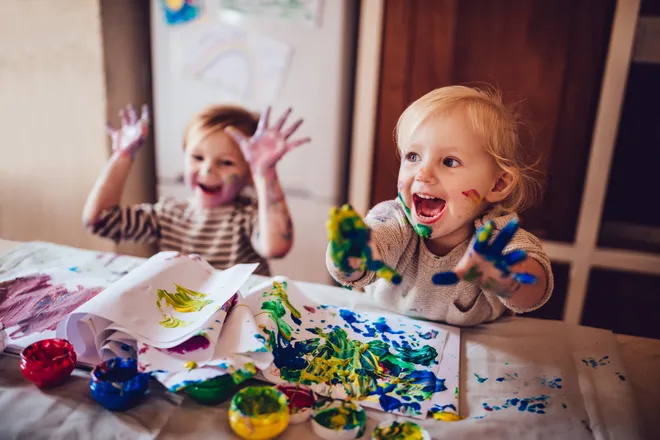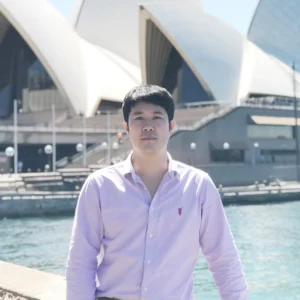Under the National Quality Standard, every early childhood education and care (ECEC) service must have its own statement of philosophy.
This philosophy:
- Reflects the values and beliefs of everyone associated with the service;
- Helps to shape the educators’ approach to learning, development and wellbeing, and
- Guides all aspects of the service’s operations and practices.
Your ECEC service’s early learning philosophy must meet your family’s needs, and if you’re looking for an alternative educational philosophy, then the Steiner, Montessori or Reggio Emilia approaches may have appeal.
All three educational philosophies are long-established and globally-practised, so let’s see what they offer little learners, according to the experts at Edith Cowan University and others.

Steiner (also known as Waldorf)
Steiner education emerged from Germany in the early 20th Century and is based on the educational philosophy of an Austrian scientist, philosopher and artist called Rudolf Steiner.
Within this educational approach, there is a focus on self-directed learning based on children’s interests; and Steiner Education Australia says, ‘In early learning, we nurture a child’s development by facilitating creative, self-directed play, as we believe that the initiative, imagination and flexibility awakened underpin later academic learning and are the basis for innovative thought in adult life.’
This self-motivated learning approach supports children’s problem-solving, critical-thinking, social and creative skills. And instead of instructing children to learn, Steiner teachers use role-modelling, and form close, supportive and ongoing relationships with children.
Youngsters are encouraged to find their creativity in a Steiner-inspired setting, so there are lots of opportunities to paint, draw, model, story tell, cook, clean and garden. Learning resources are simple, using little or no technology, and things like crayons, puppets, wood and weaving materials are used to inspire curiosity and creativity.
Children’s individual interests, abilities, strengths and culture are taken into account when assessing their learning, and there’s the option of continuing your child’s Steiner education as they grow.
There are more than 2,000 Steiner early childhood centres in over 60 countries, and you can find an Australian playgroup, preschool, primary school or secondary school here.
Genuine Steiner schools are certified and use a Steiner curriculum, and although there’s limited research around the benefits of Steiner child care, a 2018 survey found that 87 per cent of parents are satisfied with choosing a Steiner school. Some studies also show that children at Steiner-inspired schools achieve better academic scores and social outcomes than other students.

The Montessori Approach
Dr Maria Montessori developed her educational philosophy by directly observing children and integrating their development with their learning. She opened a school for disadvantaged children in early 20th Century Rome to test her theories, and since then, the Montessori approach has gained traction around the world.
In a Montessori setting, children are seen as capable of self-directed learning and able to independently choose the resources they want to learn with. There’s a focus on play and work (because children like to role-model adults and engage in real-world tasks), and practical life activities are used to build fine and gross motor skills, encourage independence and hone hand-eye coordination.
At a Montessori ECEC service, there are opportunities for children to:
- Use different utensils, e.g. scissors and tongs
- Pour different materials, e.g. sand and water
- Prepare food
- Lay the lunch table
- Wash dishes and clean other things
- Arrange flowers and do gardening.
Montessori also offers children specially designed resources, that often have a sensory element. The experts at Edith Cowan University say these resources, ‘Encourage matching, rhyming, sequencing, sandpaper letters and numbers for finger tracing, cutting, writing and drawing, sewing, weaving and woodworking’. Children also learn through repetition and self-correction (e.g. if a puzzle piece won’t fit, they’ll learn to rotate it, or try another piece).
Another interesting feature of Montessori is that children are grouped by ability, not age. These multi-age classrooms allow youngsters to work at their own pace, learn with/from their peers, and offer a great sense of community.
There are Montessori schools in over 100 countries, and in Australia, there’s a distinction between Montessori-inspired, and Montessori-registered early learning services.
Any service is free to call itself ‘Montessori’, and Montessori Australia says that most services do aim to offer a quality Montessori programme. However, it’s important to note that Montessori-registered services have been assessed by Montessori Australia against specific Quality Standards and are committed to providing an authentic Montessori programme.
You may also be interested to read an American study which found that, over time, preschoolers who attended a Montessori service;
‘Fared better on measures of academic achievement, social understanding, and mastery orientation’. They also said they enjoyed scholastic tasks more, and scored higher on executive function at the age of four.

Reggio Emilia
The Reggio Emilia approach came to prominence after World War 2, when parents and educators were looking for new educational experiences for young children.
The first municipal preschool was founded in 1963 in Reggio Emilia in Northern Italy (with the help of educationalist, Loris Malaguzzi); the first infant-toddler centre opened in 1971; and since then, this way of thinking has influenced early childhood services in more than 145 countries.
The Reggio Emilia philosophy is based on the idea that a child learns through the hundred languages belonging to all human beings, and grows in relation to others.
Each child’s rights and enormous potential are recognised, and this educational approach for ages zero to six says that:
- Children must have some control over the direction of their learning,
- Children must be able to learn through the experiences of touching, moving, listening, seeing and hearing,
- Children have a relationship with other children and with material items in the world that they must be allowed to explore, and
- Children must have endless ways and opportunities to express themselves.
Educators value children’s creativity, and they assume different roles (e.g. researcher, role model, observer, documenter, photographer and student) to watch and document learning processes.
In practice, this means that an educator might notice their children looking at some birds nesting in a tree outside their room, and may then:
- Ask the children what they know about birds,
- Provide opportunities for the children to draw the birds in the nest, make sculptures of them and read books about different bird species,
- Photograph the children engaging in their bird learning,
- Do some bird research themselves, and
- Display the whole learning journey at the centre.

Reggio Emilia-inspired services think carefully about environments and spaces. Classrooms are bright and easily navigable; each service reflects its local context and community; and resources (like boxes, fabrics and clay) are carefully placed to invite children to explore and create with them.
Families also play a key role. Reggio Emilia Australia says, Parents and carers contribute thoughts, skills, advice and possibilities in relation to learning and teaching, and children’s learning experiences are shared through documentation, meetings and celebrations.
All three alternative educational philosophies have value for children and families.
You’re encouraged to do more research if you think Steiner, Montessori and/or Reggio Emilia might be a great fit, and if your child attends a mainstream ECEC service, it’s still important that its Statement of Philosophy adheres with your family’s needs and way of thinking.
There’s certainly plenty of food for thought when it comes to early learning!

